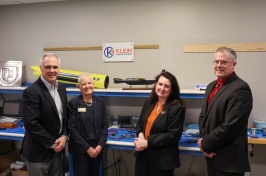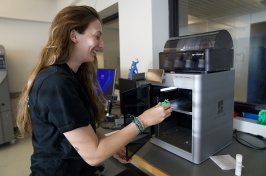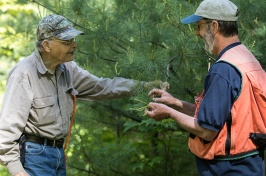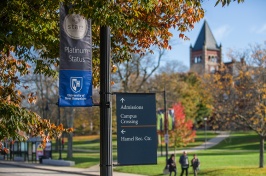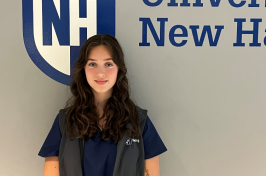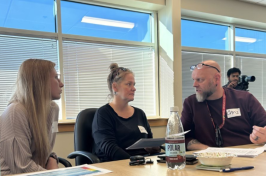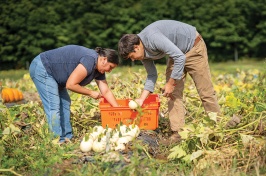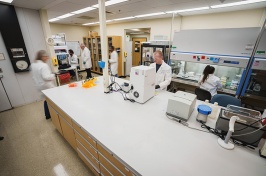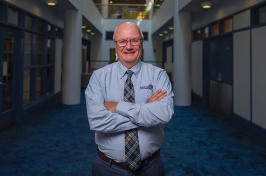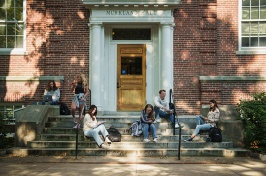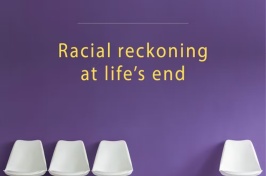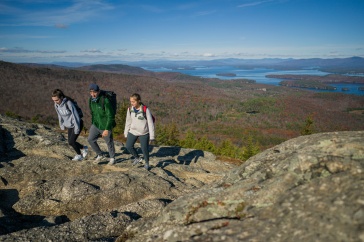
An aerial view of Berlin, New Hampshire.
Could changing the narrative help New Hampshire retain more young people?
While it’s not the only factor, research from UNH suggests that cultural narratives significantly influence how rural youth make post-high school decisions. Understanding these narratives could help the state develop strategies to keep more young people in their communities.
In a study recently published in the Journal of Adolescent Research, Cindy Hartman, associate professor in recreation management and policy, and her collaborators found that young people growing up in rural areas are surrounded by the cultural message that they need to leave home to establish themselves and return home once they’ve achieved success.
“We take a narrative perspective to understand how cultural messages are shared by institutions and people — such as community organizations and schools, family and peer groups — and how individuals internalize them,” Hartman says.
Through 27 interviews with New Hampshire stakeholders in education, workforce development and community quality-of-life institutions, researchers identified two dominant cultural narratives that shape rural youth’s postsecondary decision-making process:
- The “spread your wings” narrative (mentioned by 63% of stakeholders interviewed) – success is often linked to leaving for education and career growth.
- The “boomerang” narrative (mentioned by 66% of stakeholders interviewed) – those who leave are expected to return later in life once they have built careers and started families elsewhere.
"For many, the typical life path is finishing high school, going to college, graduating, securing a stable job, getting married, and having children. In rural areas, this often means leaving home to pursue those opportunities. There’s also an expectation that, later in life, they’ll return to their rural community to raise a family,” Hartman says.
Additionally, some rural students who want to stay and contribute to their communities feel pressured to leave — or worry that staying means they lack ambition. For rural students who follow the expected life path, building a life elsewhere and returning home can also present challenges.
How Understanding Narrative Processes Helps New Hampshire
Hartman emphasizes that dominant narratives aren’t inherently bad — leaving home may be the right choice for some. However, by understanding how these narratives shape decisions, there’s an opportunity to increase awareness of multiple pathways available to youth after high school, including options that allow them to stay and succeed in New Hampshire.
“We’re not labeling these narratives as good or bad; we’re bringing awareness to them and their impacts on rural people and communities,” Hartman says. “It’s about recognizing that some practices and policies within our institutions may unintentionally reinforce these narratives, influencing young people to make choices that might not be in their best interest — or in the best interest of their communities.”
According to Hartman, shifting the narrative means strengthening New Hampshire’s economic and educational opportunities — leveraging assets like outdoor recreation to attract and retain talent while supporting alternative pathways such as apprenticeships and career and technical education. It also involves helping postsecondary institutions create the kind of "stickiness" that encourages young people to stay.
"We want to inform state policy on how education and recreation can help attract and retain young people in New Hampshire,” Hartman says. “Expanding access to a variety of educational and career pathways, while also investing in community services that promote fulfilling lives, can help create stronger and more sustainable opportunities for success right here in New Hampshire.”
Building on the Research
As far back as the early 2000s, state leaders proposed initiatives like the 2009 “USNH 55% Initiative,” which aimed to keep college graduates in New Hampshire through incentives such as student loan repayment. While the impact of those efforts is unclear, revisiting them could help shape current strategies — especially as the need becomes more urgent. A 2023 State Workforce Assessment projects that from 2022 to 2032, the state’s 80 most in-demand jobs will see nearly 197,000 openings, yet only 6,100 are expected to be filled by new workforce growth.
According to Hartman, continuing to research this challenge could help close the gap and lead to collaborative solutions. Hartman and colleagues have applied for three National Science Foundation (NSF) grants totaling $5 million to expand their research. These projects include:
- Working with New England career and technical education (CTE) centers to study how rural youth receive career-related messages through social media and how exposure to real-life success stories influences their career perceptions.
- Collaborating with 4-H programs to help rural youth see the role of science in economic development strategies utilizing outdoor recreation, research and tourism.
Hartman also applied for an NSF grant to collaborate with a leading narrative identity researcher at Western Washington University to extend what is known about narratives about rural people and places. This research would include youth participants collecting narrative data to better understand how their rural communities shape their perceptions of success and economic opportunity, and whether alternative narratives about postsecondary success can gain traction in rural areas.
"It’s about expanding our traditionally narrow view of success — going away to college for four years before settling down to a career and a family, and following a set timeline,” Hartman says. “We call this a ‘fracturing of narratives,’ and these fractures create space for alternative paths to gain traction. They allow people to redefine success on their own terms, rather than feeling pressured to meet someone else’s version of what a fulfilling life should look like."
UNH colleagues Jayson Seaman, Andrew D. Coppens and Erin Hiley Sharp collaborated with Hartman on the Journal of Adolescent Research article, along with Molly Donovan, formerly at UNH Extension and now director of economic development at New Hampshire Community Development Finance Authority, and Sarah Jusseaume from Plymouth State University.
The University of New Hampshire Collaborative Research Excellence (CoRE) Initiative funded the research.
-
Written By:
Aaron Sanborn | Peter T. Paul College of Business and Economics | aaron.sanborn@unh.edu







